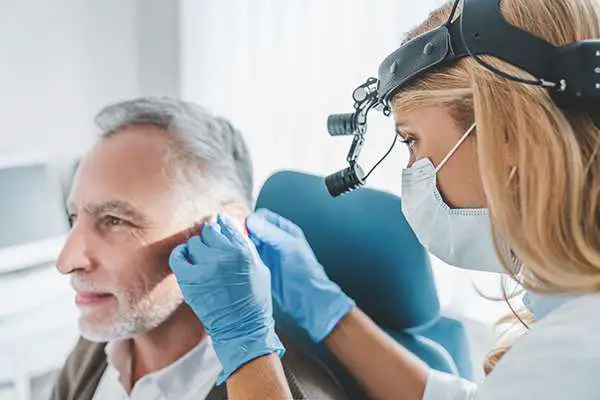Introduction
Hearing loss, particularly sensorineural hearing loss, has long been recognized as a health concern primarily managed on a personal or familial level. Yet, as our understanding of its prevalence and far-reaching implications evolve, there’s an increasing recognition of sensorineural hearing loss as a public health challenge. This perspective shift is crucial for facilitating larger scale solutions to this widespread issue, which affects millions of individuals worldwide.
It’s not just about the numbers, though they are indeed staggering. It’s about the multitude of ways sensorineural hearing loss impacts an individual’s quality of life, including their communication skills, mental health, cognitive abilities, and even their socioeconomic status. The repercussions extend beyond the individual, impacting their families, communities, and the wider health system. This blog post aims to highlight the broader context of sensorineural hearing loss as a public health concern, emphasizing the need for concerted global action to address it effectively.
Prevalence and Incidence of Sensorineural Hearing Loss: Global Statistics
Sensorineural hearing loss is the most common type of permanent hearing loss, impacting hundreds of millions of individuals globally. According to the World Health Organization, over 466 million people worldwide have disabling hearing loss, and this number is expected to increase to over 900 million by 2050.
The high prevalence of sensorineural hearing loss is largely due to age-related changes, noise exposure, and genetic predispositions. Yet, there is a substantial number of cases due to preventable causes, including infections such as measles, mumps, rubella, and meningitis, as well as birth complications and the use of ototoxic medications.
The incidence of sensorineural hearing loss varies widely by region, largely due to differences in health systems, public health policies, and access to care. For instance, the prevalence is higher in regions where access to maternal and child health services is limited, underscoring the role of socioeconomic factors in sensorineural hearing loss.
11 ways to improve sleep better with tinnitus
The Role of Public Health Policies in Addressing Sensorineural Hearing Loss
Public health policies play a critical role in addressing sensorineural hearing loss on a population level. These policies can influence the prevention, identification, and management of sensorineural hearing loss, contributing to improved outcomes for those affected.
Preventive strategies can include public education about the risks of noise exposure, promotion of immunization to prevent infections leading to hearing loss, and regulation of ototoxic medications. These preventive strategies can reduce the incidence of sensorineural hearing loss, especially in high-risk populations.
Public health policies can also facilitate early identification and intervention, which are critical for mitigating the impact of sensorineural hearing loss. This can be achieved through newborn hearing screening programs, regular hearing assessments for high-risk populations, and improved access to hearing aids and other assistive devices.
Management strategies at the policy level can include enhancing access to rehabilitation services, promoting inclusion and accessibility in educational and workplace settings, and advocating for the rights of individuals with sensorineural hearing loss.
Audien BTE (Behind the Ear) Rechargeable OTC Hearing Aid
Experience Unparalleled Sound Quality with the New Audien BTE (Behind the Ear) hearing amplifier. Elevate your hearing with the clearest, highest-quality sound available in an over-the-counter hearing assistance device. Designed by Audien, renowned for their sleek and comfortable hearing devices, the BTE model ensures exceptional hearing performance. It features advanced digital technology, including four environmental modes, background noise reduction, feedback cancellation, and two directional microphones per unit (four in total).
Say Goodbye to Missed Conversations and Hello to Superior Sound. Audien hearing devices excel at amplifying speech while reducing background noise, allowing you to effortlessly engage in conversations with friends and family. Experience the consistent, long-lasting, and sharp sound quality without any whistling or feedback issues. With customizable volume control, you can easily adjust the amplification to meet your individual needs. These devices are perfect for enhancing high tones and improving TV dialogue clarity.
Rechargeable for Uninterrupted Use. The Audien BTE hearing amplifiers are 100% rechargeable, offering convenience and freedom from the hassle of tiny button batteries. With wireless magnetic charging technology, you can enjoy a 20-hour battery life with just a quick two-hour charging time. The included charging case provides up to three full charges, giving you a total of 60 hours of amplified sound. Simply place the devices in the case, and they will wirelessly charge, ensuring you’re always ready to hear your best. Experience the ease and reliability of Audien sound amplifiers, ideal for individuals with dexterity issues or those tired of constantly purchasing and replacing batteries.
How COVID-19 Impacted Sensorineural Hearing Loss Research
The COVID-19 pandemic has had a profound impact on all aspects of healthcare, including research into sensorineural hearing loss. Many research projects were put on hold or delayed due to restrictions and the re-allocation of resources towards the pandemic response. This has resulted in a temporary slowdown in the advancement of knowledge about sensorineural hearing loss.
However, there have also been some unexpected developments in the field due to the pandemic. Some researchers have reported instances of sensorineural hearing loss in patients with COVID-19, sparking new lines of investigation into the potential links between viral infections and hearing loss. These findings may open up new avenues for understanding the causes of sensorineural hearing loss and developing novel therapeutic strategies.
Moreover, the pandemic has also shed light on the importance of virtual healthcare services, including teleaudiology. As face-to-face appointments became challenging, many individuals with sensorineural hearing loss turned to online platforms for support. This highlights the potential role of digital solutions in improving accessibility to care for people with sensorineural hearing loss, even beyond the pandemic.
Vaccinations and Sensorineural Hearing Loss: What We Know So Far
As scientists and researchers continue to delve into the multifaceted causes of sensorineural hearing loss, vaccinations have emerged as an area of interest. Some vaccines, particularly those for diseases such as measles, mumps, and rubella, are well-known for their role in preventing infections that can lead to sensorineural hearing loss. Thus, promoting widespread vaccination can significantly contribute to reducing the incidence of sensorineural hearing loss linked to these infections.
On the other hand, there have been anecdotal reports and some research suggesting a potential link between certain vaccines and the development of sudden sensorineural hearing loss. While these reports can cause concern, it is important to note that such cases are extremely rare. The overall benefits of vaccination, in terms of preventing life-threatening diseases and their potential complications (including hearing loss), significantly outweigh the risk.
Presently, more research is underway to understand the potential impacts of the COVID-19 vaccines on hearing health. Initial reports suggest a very low incidence of hearing-related side effects. As with all areas of medicine, it is vital to continue monitoring these effects and conducting research to ensure the safety and effectiveness of vaccines.
Sensorineural hearing loss is a widespread and complex public health challenge that requires a multi-faceted approach. As our understanding of this condition continues to evolve, it is essential to leverage global statistics, public health policies, research advancements, and all available preventive measures to enhance the lives of those living with sensorineural hearing loss.
Conclusion
Sensorineural hearing loss is more than just an individual health concern – it’s a significant public health challenge with far-reaching societal implications. Its high prevalence worldwide underscores the importance of seeing this not just as a medical issue but one that requires a public health lens.
Preventive strategies, early identification and intervention, and improved management can all contribute to reducing the burden of sensorineural hearing loss. Public health policies play a pivotal role in implementing these strategies, and their importance can’t be overstated.
The impacts of the COVID-19 pandemic on sensorineural hearing loss research have been significant, but they’ve also revealed new areas of exploration and potential digital solutions to accessibility issues. Vaccinations remain a crucial preventive measure, with their role in preventing hearing loss-inducing infections being critical.
In our quest to tackle sensorineural hearing loss, continuous research, widespread education, and concerted public health efforts are crucial. Only then can we hope to reduce its incidence, improve outcomes for those affected, and ultimately, turn down the volume on this public health challenge.






